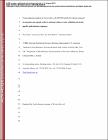| dc.contributor.author | HINTON, JAY | |
| dc.date.accessioned | 2010-11-12T12:51:44Z | |
| dc.date.available | 2010-11-12T12:51:44Z | |
| dc.date.issued | 2010 | |
| dc.date.submitted | 2010 | en |
| dc.identifier.citation | Thea King, Sacha Lucchini, Jay C.D. Hinton, and Kari Gobius, Transcriptomic analysis of Escherichia coli O157:H7 and K-12 cultures exposed to inorganic and organic acids in stationary phase reveals acidulant and strain-specific acid tolerance responses, Applied and Environmental Microbiology, 76, 19, 2010, 6514-6528 | en |
| dc.identifier.other | Y | |
| dc.identifier.uri | http://hdl.handle.net/2262/41150 | |
| dc.description | PUBLISHED | en |
| dc.description.abstract | The foodborne pathogen Escherichia coli O157:H7 is commonly exposed to organic acid in processed and preserved foods, allowing adaptation and the development of tolerance to pH levels otherwise lethal. Since little is known about the molecular basis of adaptation of E. coli to organic acids, we studied K-12 MG1655 and O157:H7 Sakai during exposure to acetic-, lactic-, and hydrochloric acid at pH 5.5. This is the first analysis of the pH-dependent transcriptomic response of stationary phase E. coli. Thirty-four genes and three intergenic regions were upregulated by both strains during exposure to all acids. This universal acid response included genes involved in oxidative-, envelope-, and cold stress resistance, iron and manganese uptake, as well as 10 genes of unknown function. Acidulant- and strain-specific responses were also revealed. The acidulant-specific response reflects differences in the mode of microbial inactivation, even between weak organic acids. Both strains exhibited similar responses to lactic and hydrochloric acid, while the response to acetic acid was distinct. Acidulant-dependent differences between the strains involved induction of genes involved in the heat shock response, osmoregulation, inorganic ion and nucleotide transport and metabolism, translation, and energy production. E. coli O157:H7-specific acid-inducible genes were identified, suggesting that the EHEC strain possesses additional molecular mechanisms contributing to acid resistance that are absent in K-12. While E. coli K-12 was most resistant to lactic and hydrochloric acid, O157:H7 may have a greater capability to survive in more complex acidic environments such as those encountered in the host and during food processing. | en |
| dc.format.extent | 6514-6528 | en |
| dc.language.iso | en | en |
| dc.relation.ispartofseries | Applied and Environmental Microbiology; | |
| dc.relation.ispartofseries | 76; | |
| dc.relation.ispartofseries | 19; | |
| dc.rights | Y | en |
| dc.subject | Immunology | en |
| dc.subject | Escherichia coli | en |
| dc.title | Transcriptomic analysis of Escherichia coli O157:H7 and K-12 cultures exposed to inorganic and organic acids in stationary phase reveals acidulant and strain-specific acid tolerance responses | en |
| dc.type | Journal Article | en |
| dc.type.supercollection | scholarly_publications | en |
| dc.type.supercollection | refereed_publications | en |
| dc.identifier.peoplefinderurl | http://people.tcd.ie/hintonj | |
| dc.identifier.rssinternalid | 68015 | |
| dc.identifier.rssuri | http://dx.doi.org/10.1128/AEM.02392-09 | en |




